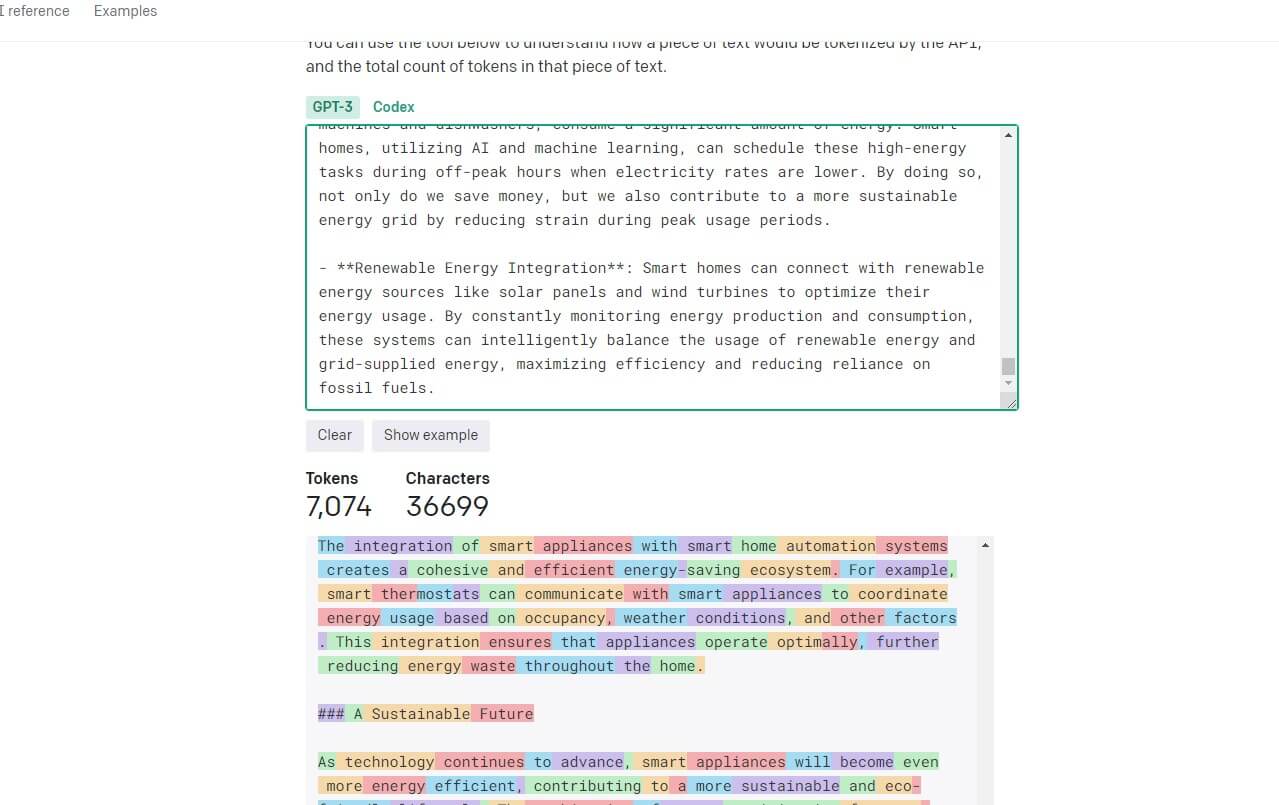How we wrote 1 million words for $5 (in just 3 hours)

To demonstrate the power of Lyla's AI writing capabilities, we decided to challenge ourselves to do something big. Really big.
We wanted to write 500 HIGH QUALITY blog posts, each containing 2000 words or more, in less than a day.
That's 1 million words.
To put this in perspective, the rate for an average human writer is around 20 cents per word for a typical blog post. So around $400 per 2000 word blog post. I think most would agree that's a good price.
So, if we were to ask this writer to write us 500 blog posts, the cost would be around $200,000.
Not too mention, the delivery time would, more than likely, be longer than 1 year assuming they could write at least one blog post a day. And that's a stretch.
But what if we could do this with AI, in less than day for around $5? Seems impossible.
So we decided to do it using Lyla's AI shortcuts and ChatGPT's API (which is available for public use after a signing up on openai.com).
Writing A Blog Post with AI
Anyone can use ChatGPT, the most advanced AI writing tool out there, to write a blog post. That's easy.
But, like many have discovered, the AI's output is only as good as the user's input.
These are the typical scenarios:
- Use a generic prompt -> You get a generic blog post that most readers know is AI written.
- Use a creative prompt with more details or requests -> You get a better result but still easy to determine if it was written by AI.
- Use multiple prompts to craft a single blog post -> Now we're talking. Breaking a task up into sub-tasks almost always yields better results from the AI model.
So our goal was to use multiple prompts chained together to write our blog posts.
Using Multiple Prompts for AI Writing
The problem with the multi-prompt approach is that it's very time consuming, especially if you're inserting the outputs of prompts into more prompts.
This is the reason we built Lyla.ai. Lyla gives you the capability to build "shortcuts" made up of multiple AI prompts that can be chained together. Not only that, they can be looped.
The result is a very quick and easy way to run multi-prompt operations that produce higher than average results.
Not only that, ChatGPT seems to have a limit of 800-1000 words maximum when prompted to write a full blog post. Even asking it directly to write a "2000 word blog post" tends to result in a much shorter output.
Our multi-prompt solution fixes this issue. Writing a 2000 word or even a 10,000 word post becomes much easier to do.
Writing Great Blog Posts with AI
For our AI writing experiment, we had to make a few initial decisions before engineering the prompts.
This is a high level breakdown of each prompt and how it is used.
In part 2 of this series, we’ll go into more detail on each prompt and discuss the many prompt engineering tricks we have discovered.
1. The Topic
First, how will the topic for each blog post be conceived? We decided to let ChatGPT decide this for each blog post.
We designed a prompt that ensured a random enough response that there would be little overlap in topics across 500 blog posts.
Prompt Example:
2. The Writing Style
Second, we wanted each blog post to be unique not only in content but in writing style.
So we created a second prompt that generates the name of a random bestselling author.
Prompt Example:
3. The Blog Outline
ChatGPT, and every other generative AI model out there, likes structure and details. The more you can provide, the better. So we want to prompt ChatGPT to create a detailed blog outline on the topic.
To ensure each blog post is at least 2000 words long, we will ask it to create a minimum of 6 sections, not including an introduction or conclusion.
4. The Title
Based on the blog outline and the writing style that have been generated, we asked ChatGPT to create a catchy title for the blog post.
5. The Research
This is where the magic starts happening. Think of prompting ChatGPT as extracting information it holds in its databases. Sometimes some "coaxing" is required.
This is where research comes into play. It may cost additional tokens, but the results are worth it.
We are going to ask ChatGPT to research each section of the blog outline separately and create a highly detailed list of notes for every section.
6. Writing the Main Body
Now that we have compiled a detailed list of notes on each section, we want ChatGPT to turn those notes into sections of a blog post.
So we create a prompt to write a single section of a blog post using the notes as context.
Now we have all of the sections of the blog post written and ready to be merged, which is another feature of Lyla's AI shortcuts.
7. The Introduction
It's a little backwards, but we found this is the best way to write a good introduction.
Using what has been written thus far, ChatGPT can now write an introduction that fits the content it has already generated.
8. Putting It All Together
Finally, our AI shortcut will automatically merge all of the outputs we have chosen together.
This leave us with a well thought out and thoroughly researched blog post that would probably cost far more than 20 cents per word to write.
The AI Shortcut
As you can see above, our AI blog article shortcut is made up of 6 main ChatGPT prompts, and 2 of those prompts (research and writing) will run in a loop several times.
At the end of the process, Lyla’s algorithm will combine the outputs as we dictated when designing the shortcut.
While this seems complicated and difficult to do unless you are a Python developer experienced in script writing, this shortcut required less than an hour for us to create.
Below is a diagram breaking down the AI shortcut's anatomy:
Write a great blog post]) --> B[/Prompt 1:
Generate a random topic/]; A --> C[/Prompt 2:
Choose a random bestselling author.
Briefly describe their writing style./]; B -->|Use 'Topic' in Prompt 3| D[/Prompt 2:
Choose a random bestselling author.
Briefly describe their writing style./]; C -->|Use 'Author Style' in Prompt 3| D[/Prompt 3:
Create a detailed outline for the post
consisting of 6 sections/]; D -->|Use the 'Outline' in Prompt 4| E[/Prompt 4:
Create thorough research notes
on each section in the outline/]; E -->|Use 'Research Notes' in Prompt 5| F[/Prompt 5:
Turn notes into blog sections/] C --> F[/Prompt 5:
Turn notes into blog sections/] C --> G[/Prompt 6:
Write an engaging introduction/] F -->|Input 'Blog Sections'| H[Lyla Algorithm] G -->|Input 'Introduction'| H[Lyla Algorithm] H -->|Combine outputs| I([Outputs are combined into
the final blog post])
Once we were satisfied with the output of the shortcut, all that was needed was to loop it 500 times. The output from Lyla’s shortcuts are displayed as text on the shortcut page.
Each time the shortcut is looped, the output is prepended to the existing text. So we decided to write 20 blog posts at a time to not overload the browser.
The results were copy and pasted into individual documents which was by far the most time consuming part of this experiment. We will paste a link to the folder containing all 500 blog posts shortly.
Token Consumption
Due to the several steps we took to craft a high quality AI written blog post, the amount of tokens used to generate each blog post was higher than using a single generic prompt to write a blog post.
Token consumption varied but the average amount of tokens spent to write a 2000 word blog post was around 6000 tokens.
Below is example of a random blog post we wrote using the AI shortcut. The blog post was approximately 3000 words long and it took just over 7000 tokens to write.
Which is under 2 cents. Not bad.

The Results
We successfully used ChatGPT to write 500 blog posts amounting to more than 1 million words.
In general, the quality of the blog posts was far above average.
It took under 3 hours for ChatGPT to write the content and Lyla to combine it. It took longer to copy and paste it into individual documents.
Total token consumption was around 3 million tokens. We used the ChatGPT 3.5 Turbo (4k context) API.
Pricing for the ChatGPT 3.5 model is different for input and output, so to keep things simple, we averaged the two which came to $.00175 per 1000 tokens.
Based on that pricing, it cost us $5.25 to write 500 high quality, 2000 word blog posts…holy sh#t.
Analyzing the Samples
Here's a few examples from the results of our experiment.
These are completely unedited. We asked ChatGPT to provide the markdown formatting as well.
Samples #1 - Unveiling the Wizardy of Smart Homes
Word Count: 3093
Token Used: 7000
Total Cost: $.012 (1.2 cents)
ChatGPT decided to use the magical writing style of J.K. Rowling and write a lengthy blog post on Smart Home automation.
While it covers a broad range of subjects related to the topic and is not as focused as we'd like, this simply require small adjustments in the prompt designs.
But this example shows that our AI shortcuts have no problem "coaxing" ChatGPT to write long form blog posts.
Sample #2 - The Power of Transformational Leadership
Word Count: 2226
Token Used: 7511
Total Cost: $.013 (1.3 cents)
ChatGPT decided to use the style of author Jodi Picoult. We noticed the writing of this article was a bit more "robotic". This could have something to do with the lower number of publications and writing samples (when compared to a better known writer) available to ChatGPT while being trained.
That being said, it's a well researched long form blog post that hits all the main points of the topic.